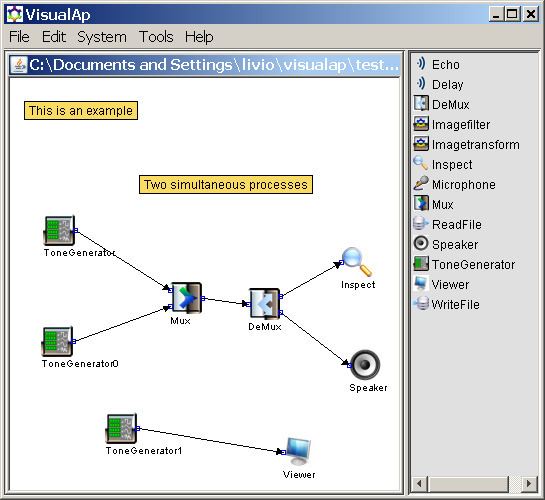Developer(s) The VisualAp Team Type Visual framework | Initial release January 2008 Operating system | |
 | ||
License GNU General Public License | ||
VisualAp is a visual framework for building applications and emulate systems. VisualAp is cross-platform as it is a 100% Java application.
Contents
This application is able to perform audio processing, image processing, text and other process-driven emulation. VisualAp provides a visual framework based on lightweight visual components (proclets) that implements specific tasks.
Users can extend the capabilities of VisualAp via user-written proclets. Custom analysis and processing proclets can be developed using Eclipse.
Features
The user can create an application/system by selecting the components from a toolbox, configuring the parameters (via the Javabeans framework), and connecting the components together in order to set up communication channels between the components.
From the application menu the user can:
Inside the main window the user is able to:
Components
The following visual components are included in version 1.1 of VisualAp:
New components, based on Javabean conventions, can be created to enrich the current library, using a Java software development platform.
Dataflow programming
The programming language used in VisualAp to describe a system is a dataflow programming language. Execution is determined by the structure of the graphical block diagram on which the programmer connects different components by drawing connectors. These connectors propagate variables and any component can execute as soon as all its input data become available. Internally the VisualAp programming language is based on XML.
VisualAp uses multi-thread execution whenever multiple components are ready for execution simultaneously.
